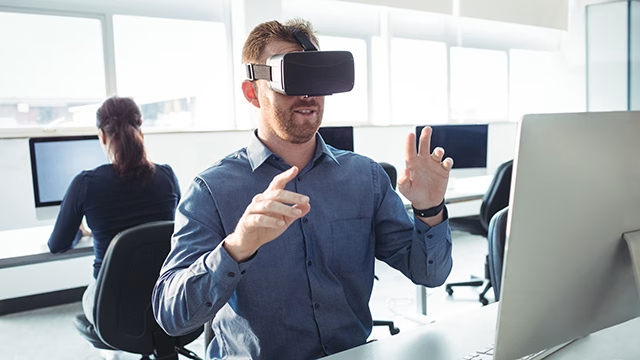Computer-Based Training and Computer Assisted Instruction

Unlock the Future of Training with Computer-Based Training and Computer Assisted Instruction
In today’s fast-paced world, organisations and individuals demand effective, flexible, and engaging training solutions. Learning and training while at your computer is nothing inherently new, but we can present the best solutions and methods to harness time and efficacy.
Our approach to Computer-Based Training (CBT) and Computer Assisted Instruction (CAI) revolutionises learning by leveraging digital platforms to deliver impactful training across industries. Whether for businesses, educational institutions, or individuals, options around the utilisation of CBT and CAI offers unparalleled advantages for those seeking modern, efficient, and scalable solutions.
It replaces traditional in-person training with interactive modules, simulations, videos, and assessments, allowing learners to train at their own pace, anytime and anywhere. This flexibility makes CBT and CAI ideal for dynamic and complex training environments.

CBT empowers learners to access training on-demand, removing barriers such as time zones and physical classrooms. Training is available 24/7 via desktops, tablets, and mobile devices, enabling employees and students to learn when and where it suits them.

We create CBT and CAI that uses multimedia tools to create engaging, impactful learning experiences:

CBT and CAI can be tailored to meet industry-specific or learner-specific requirements:

CBT and CAI can be tailored to meet industry-specific or learner-specific requirements:

CBT eliminates traditional training costs such as travel, venue rentals, and printed materials. Organisations can train thousands of employees simultaneously with reusable training modules, delivering consistent quality at scale.

With integrated tracking tools, CBT platforms and CAI solutions provide insights into learner progress and training effectiveness:

For industries with stringent regulations, CBT and CAI ensures compliance by delivering up-to-date training content and issuing certifications upon completion.

CBT eliminates traditional training costs such as travel, venue rentals, and printed materials. Organisations can train thousands of employees simultaneously with reusable training modules, delivering consistent quality at scale.

With integrated tracking tools, CBT platforms and CAI solutions provide insights into learner progress and training effectiveness:

For industries with stringent regulations, CBT and CAI ensures compliance by delivering up-to-date training content and issuing certifications upon completion.

For industries requiring highly specialised training, such as complex engineering systems, integrating Virtual Reality (VR) and Augmented Reality (AR) elevates CBT to new heights.
Metaverse VR

Immersive CBT is transforming industries by addressing the unique demands of complex systems.
The communications equipment onboard a Naval Platform consists of interconnected components such as antennas, transmitters, encryption modules, and power supplies. CBT (with a system like a 3D Laptop) allows naval trainees to:
With interactive tools, trainees can practice maintenance and troubleshooting techniques without relying on live systems:
Given the Customer need for on-the-go training, a portable 3D laptop is an ideal solution:
Training for communications systems often involves high-stakes scenarios, such as ensuring secure transmissions during operations. A 3D laptop:
Training with a 3D laptop reduces costs associated with physical equipment and operational downtime:
Effective operation of communications equipment often requires collaboration between engineers, operators, and command personnel. A 3D laptop supports collaborative training by:
Integrated analytics allow for real-time tracking of trainee performance: